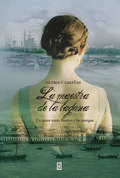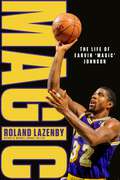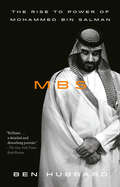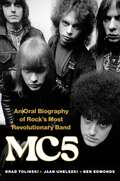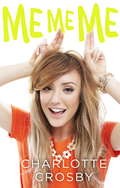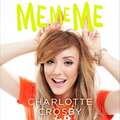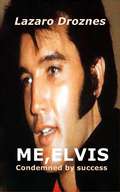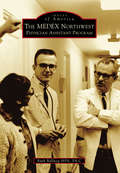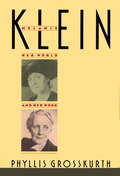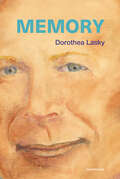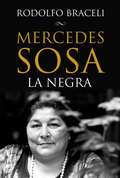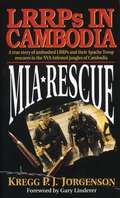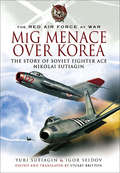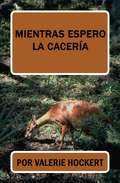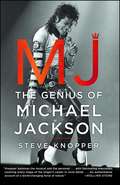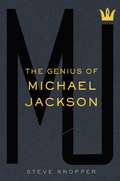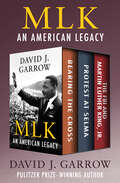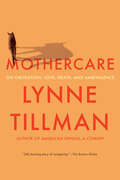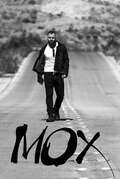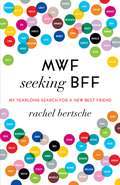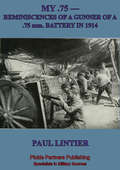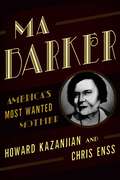- Table View
- List View
MAESTRA DE LA LAGUNA, LA (EBOOK)
by Gloria V. CasañasElizabeth O Connor, una de las maestras norteamericanas que Sarmiento consigue traer a la Argentina, no sospecha hasta qué punto aquella empresa sobrepasa sus expectativas. Valiente, culta y decidida, su sangre irlandesa es puesta a prueba más de una vez, tanto en la Gran Aldea que sigue siendo Buenos Aires como en la pampa brava, donde el eco de los malones resuena aún, a la luz de la estrella del gran Calfucurá. La joven maestra trae consigo la nueva enseñanza, pero ignora que bajo la Cruz del Sur existen otras lecciones que ella debe aprender, en una sociedad salvaje donde las reglas son escritas con sangre y en la que los códigos del amor son muy distintos a los de su Massachusetts natal. Mientras tanto, en el Río de la Plata, un hombre de alcurnia que busca olvidar su condición y hundirse en el oprobio, lejos de la sociedad que lo vio nacer, es sin duda un condenado, pero# no hay condenado que no desee la salvación. Podrá una mujer civilizada, sin otras armas que su educación y su perseverancia, redimir al alma más oscura?
MAGIC: The Life of Earvin ‘Magic’ Johnson
by Roland LazenbyThe definitive biography of the basketball legend Earvin 'Magic' Johnson, from the author of Michael Jordan: the Life. Magic Johnson is one of the most beloved, and also controversial, athletes in history. He lifted the dowdy sport of American pro basketball into the global spotlight, a transformation driven by his ability to eviscerate opponents with a grand sense of fun. He was a master entertainer who directed basketball to the heights of both glory and epic excess, all of it driven by his mind-blowing no-look passes and personal charm. At the charismatic height of his power, Johnson shocked the world with his personal story which pushed public awareness of the HIV and AIDs crisis. Through hundreds of interviews with Johnson's coaches, representatives past and present, teammates, opponents, friends and loved ones, including key conversations with Johnson himself, this is the first truly definitive study of the revolutionary player: the man, the icon, Magic Johnson.
MBS: The Rise to Power of Mohammed bin Salman
by Ben HubbardA gripping, behind-the-scenes portrait of the rise of Saudi Arabia&’s secretive and mercurial new ruler. <P><P>MBS is the untold story of how a mysterious young prince emerged from Saudi Arabia’s sprawling royal family to overhaul the economy and society of the richest country in the Middle East—and gather as much power as possible into his own hands. <P><P>Since his father, King Salman, ascended to the throne in 2015, Mohammed bin Salman has leveraged his influence to restructure the kingdom’s economy, loosen its strict Islamic social codes, and confront its enemies around the region, especially Iran. That vision won him fans at home and on Wall Street, in Silicon Valley, in Hollywood, and at the White House, where President Trump embraced the prince as a key player in his own vision for the Middle East. <P><P>But over time, the sheen of the visionary young reformer has become tarnished, leaving many struggling to determine whether MBS is in fact a rising dictator whose inexperience and rash decisions are destabilizing the world’s most volatile region. Based on years of reporting and hundreds of interviews, MBS reveals the machinations behind the kingdom’s catastrophic military intervention in Yemen, the bizarre detention of princes and businessmen in the Riyadh Ritz-Carlton, and the shifting Saudi relationships with Israel and the United States. <P><P>And finally, it sheds new light on the greatest scandal of the young autocrat’s rise: the brutal killing of journalist Jamal Khashoggi by Saudi agents in Istanbul, a crime that shook Saudi Arabia’s relationship with Washington and left the world wondering whether MBS could get away with murder. MBS is a riveting, eye-opening account of how the young prince has wielded vast powers to reshape his kingdom and the world around him.
MC5: An Oral Biography of Rock's Most Revolutionary Band
by Brad Tolinski Jaan Uhelszki Ben EdmondsA riveting oral biography of the proto-punk Detroit rockers MC5, based on original interviews with the band and key members of their inner circle Few bands have dared to ignite a revolution through their fusion of activism and art like MC5. Managed by the charismatic radical and hippie spokesman, John Sinclair, MC5 wasn&’t just a band; they were a thunderous proclamation of dissent, amplifying the voices of the marginalized long before it was fashionable. From championing racial equality to rallying for cannabis legalization, they fearlessly thrust their beliefs onto the world stage. For their efforts, the rabble-rousing musical arm of the White Panther Party, the scourge of J. Edgar Hoover's FBI and other defenders of public decency, were often beaten with clubs, threatened at gunpoint, tossed into jail, and even unceremoniously dumped by their record company, right as their album was storming up the charts—and all while the Sex Pistols were still on training wheels. What has been lost amidst this notoriety is MC5 itself, a band worth remembering not because they were bad boys, but because they were so damn good. In MC5: An Oral Biography of Rock&’s Most Revolutionary Band, music journalists Brad Tolinski and Jaan Uhelszki invite readers to reconsider this legendary group. Centered around a series of interviews with MC5, their manager, and their inner circle—many of whom are no longer with us—that Tolinski and Uhelszki inherited from CREEM Magazine founding staffer and Mojo's US editor Ben Edmonds prior to his death, this book presents a genuinely candid, funny, and moving portrait of rock&’s most uncompromising and articulate band. MC5 also features a virtual &“who&’s who&” of 1960s rockers, including Iggy and the Stooges, Janis Joplin, Jimi Hendrix, promoter Bill Graham, John Lennon, the Jefferson Airplane, and political firebrands like Abbie Hoffman, Jerry Rubin, Tom Hayden, and Black Panther Eldridge Cleaver. As innovative, insightful, and inspiring as the band itself, MC5 is a fitting testament to the legacy of these iconic rock pioneers—told in their very own words.
ME ME ME
by Charlotte CrosbyCharlotte Crosby has been one of the UK's best-loved TV stars since she burst onto the celeb scene in 2011 with Geordie Shore. Laugh-out-loud hilarious, genuine, and a proper Geordie, Charlotte's popularity has even seen her crowned winner of 2013's Celebrity Big Brother. With her trademark humour and warmth, in ME ME ME Charlotte takes us on a very unique journey through her eventful teenage years (where literally nothing is off limits!), her attempts at holding down jobs (and booze), the life-changing experience of Geordie Shore, the truth about Gaz and his parsnip, and her inspiring weight-loss triumph. Full of drawings, doodles, and Charlotte's personal photos, this will be unlike any other celebrity autobiography on the market. Extremely personal, insanely honest and pant-wettingly funny.
ME ME ME
by Charlotte CrosbyCharlotte Crosby has been one of the UK's best-loved TV stars since she burst onto the celeb scene in 2011 with Geordie Shore. Laugh-out-loud hilarious, genuine, and a proper Geordie, Charlotte's popularity has even seen her crowned winner of 2013's Celebrity Big Brother. With her trademark humour and warmth, in ME ME ME Charlotte takes us on a very unique journey through her eventful teenage years (where literally nothing is off limits!), her attempts at holding down jobs (and booze), the life-changing experience of Geordie Shore, the truth about Gaz and his parsnip, and her inspiring weight-loss triumph. Full of drawings, doodles, and Charlotte's personal photos, this will be unlike any other celebrity autobiography on the market. Extremely personal, insanely honest and pant-wettingly funny.
ME ME ME
by Charlotte CrosbyCharlotte Crosby has been one of the UK's best-loved TV stars since she burst onto the celeb scene in 2011 with Geordie Shore. Laugh-out-loud hilarious, genuine, and a proper Geordie, Charlotte's popularity has even seen her crowned winner of 2013's Celebrity Big Brother. With her trademark humour and warmth, in ME ME ME Charlotte takes us on a very unique journey through her eventful teenage years (where literally nothing is off limits!), her attempts at holding down jobs (and booze), the life-changing experience of Geordie Shore, the truth about Gaz and his parsnip, and her inspiring weight-loss triumph. Full of drawings, doodles, and Charlotte's personal photos, this will be unlike any other celebrity autobiography on the market. Extremely personal, insanely honest and pant-wettingly funny.(P)2015 Headline Digital
ME, ELVIS: CONDEMNED BY SUCCESS
by Lilian G. Selvaggio Lázaro DroznesElvis Presley's lifespan is the tragic story of a star prisoner of his own success and the circumstances surrounding him. Teenagers dream about becoming rock stars and Elvis wonders, "What can rock stars dream about?" At 23, Elvis has achieved much more than what he has dreamed of in his wildest fantasies, just to end up trapped in his own image, feeling that his life no longer belongs to him. He is trapped inside the machinery he himself has created. This work of dramatic fiction recreates the most significant moments in the idol's life through anecdotes and his songs, in order to show a chain of situations that lead an idol to pay the price of fame with his own life.
MEDEX Northwest Physician Assistant Program, The (Images of America)
by Ruth Ballweg MPA PA-CThe MEDEX Northwest Physician Assistant Program was created at the University of Washington in 1968 as one of the nation's first physician assistant (PA) programs. A joint project of the Washington State Medical Association and the University of Washington School of Medicine, MEDEX was designed to meet the needs of overworked physicians in rural communities. As envisioned by MEDEX founder Dr. Richard A. Smith, "Physician Assistants were created by physicians, for physicians." Initially, all MEDEX students were former military corpsmen returning from Vietnam. Based on their extensive clinical experience, they were well accepted by doctors and their patients. Dr. Richard Smith was a former Peace Corps physician and leader of the federal project to desegregate the US hospital "system" as a requirement for Medicare reimbursement. Dr. Smith's founding principles for MEDEX included a collaborative model for community and practitioner involvement--the framework for the MEDEX Program throughout its 45-year history.
MELANIE KLEIN
by Phyllis GrosskurthUntil recently underestimated in America, Melanie Klein was a leading figure in psychoanalytic circles from the 1920s until her death in 1960. Parent of object-relations theory, she saw the development of children, and of the female in particular, in a way that was both an extension of and a challenge to orthodox Freudian thinking. Now, drawing on a wealth of hitherto unexplored documents as well as extensive interviews with people who knew and worked with Klein, Phyllis Grosskurth has written a superb account of this important, complicated woman and her theories--theories that are still growing in influence both here and abroad. Melanie Klein was not only a highly original theorist and effective practitioner, but a thoroughly fascinating woman. This brilliant, definitive book on her life is a major contribution to psychoanalytic history.
MEMORY (Semiotext(e) / Native Agents)
by Dorothea LaskyA poet&’s spacious exploration of time, memory, and art, in homage to Bernadette Mayer.A spiritual homage to Bernadette Mayer&’s monumental artwork of the same title, Dorothea Lasky&’s Memory is a cycle of &“poet&’s essays&” stirred by two profound questions. What constitutes personhood and consciousness? What memories get lost, and why? Expansive in her quest for answers, Lasky launches an inspired investigation of the forces that form our lives and deepest senses of ourselves. She identifies three dimensions of memory—ancestral, personal, and poetic—and in her singularly clear voice, undertakes to enter into their mysteries. From those recesses, she returns with a wide-ranging collection of essays that like lyric poems find the universal inside the particular. Memory reflects on the banal; private emotions and historical trauma; dear departed poets (Diane di Prima, Lucie Brock-Broido); her father&’s battle with Alzheimer&’s; and cultural events that have become charged sites of collective reminiscence (the moon landing, the music of Neutral Milk Hotel). Other pieces face the flip side of memory, asking what&’s left where memory is absent, and what&’s &“real&” beyond the horizon of death. The book closes with &“Time, the Rose, and the Moon,&” an ars poetica published here in English for the first time, which offers the ancient symbol of the Ouroboros as a figure for the nonlinear processes of time, memory, and art.Like Mayer before her, Lasky reveals memory to be huge and haunting, as she accumulates impressions that challenge the very possibility of fixed meaning. &“Every rose has the scent of death,&” she writes. &“And poetry is a perfume. That will stay on your body forever.… Whatever happens this time around, remember that.&”
MERCEDES SOSA, LA NEGRA (ACTUAL) EBOOK
by Rodolfo BraceliMercedes Sosa. La Negra es la edición definitiva de la única biografía que se realizó con su palabra viva. A los 67 años de edad, en el año 2003, La Negra decidió contar su vida. Como no quiso simularse escritora, la suya es una biografía en voz alta. Ella cuenta y se cuenta. Es así como, para un personaje complejo y atípico, Rodolfo Braceli eligió un camino inusual. Todo su bagaje de escritor, periodista, dramaturgo y poeta lo despliega en este original libro desde y sobre Mercedes Sosa. Por un lado, el relato de la suprema cantante-cantora es la columna vertebral. Por otro, emergen voces: la de su madre y hermanos, la de su hijo y amigos. Cada tanto aparecen, con sus recuerdos, figuras como León Gieco, Horacio Molina, Víctor Heredia, Liliana Herrero, Carlos Alonso y Charly García. Ellos completan el retrato de la otra Mercedes, la que estaba lejos de las ovaciones y muy cerca de la gente. No es todo: a la voz, por momentos en carne viva de la protagonista, se suma en el montaje el relato de episodios dramáticos y memorables que marcaron su vida y su carrera. Este libro que empezó a gestarse hace casi medio siglo incluye infancia, adolescencia, despertar artístico, amores y desamores, ideología, amenazas de muerte, censura y exilio, glorioso retorno en el 82, consagración mundial, enfermedad con apetencia de suicidio en el 97, testamento. Como escribió Liliana Herrero: "Estamos ante una confesión pasional, pero también ante un documento extraordinario. Ante un libro político y también profundamente íntimo, público y privado, indispensable para contar la historia cultural de este país".
MIA Rescue: LRRPs in Cambodia
by Kregg P. Jorgenson"This is an inspiring story of courage and sacrifice--one hell of an exciting true war story!"--Kenn Miller Author of Tiger the Lurp DogOn 17 June 1970, in Mondol Kiri Province, Cambodia, the five men of Long-Range Reconnaissance Patrol (LRRP) Team 5-2 were about to halt for the day. Night was coming, the skies were dark, and so were the men's thoughts--they'd just found freshly dug NVA bunkers inside a scrub-brush tree line and their position was not secure. As they carefully searched for better night lager, they learned the hard way that they had walked into an ambush kill zone: NVA fire quickly downed two men and wounded two others. In minutes, Team 5-2 had been transformed from the hunters to the hunted. They had no radio comms with their headquarters and had just two rifles and fifteen magazines of ammunition.Two men were down, but the team was not out. MIA RESCUE is the story of Team 5-2 and the heroic and ultimately successful attempts to rescue them despite extraordinarily bad weather and an angry and aware enemy. "Seldom can an author stimulate emotions, from the taste of fear to sweaty palms to the feeling of relief when the mission is over, but Jorgenson does and much more. If the reader was never in combat, he will feel like a Nam vet when he finishes this book."--Jerry Boyle Author of Apache SunriseFrom the Paperback edition.
MIG Menace Over Korea: The Story of Soviet Fighter Ace Nicolai Sutiagin
by Igor Seidov Yuri SutiaginThis fascinating biography of a Russian flying ace offers a rare glimpse into the role of the Soviet Air Force during the Korean War. Nikolai Vasil'evich Sutiagin was the top-scoring Soviet flying ace of the Korean War. He flew his MiG-15 in lethal dogfights against American Sabres and Australian Meteors, winning twenty-two victories. For his distinguished service, he was named a Hero of the Soviet Union, the Soviet military&’s highest honor. Now, with the opening of the Russian archives, this authoritative biography presents a full account of Sutiagin&’s life and career. Beyond these official records, the authors draw from the reminiscences of Sutiagin's comrades and his wife's personal diary to present a nuanced and vividly detailed portrait of one of Russia&’s greatest fighter pilots.
MILF: Motherhood, Identity, Love and F*ckery
by Paloma Faith***THE INSTANT NUMBER ONE SUNDAY TIMES BESTSELLER***'The most raw, funny and liberating look at what it is to be a woman.' – FEARNE COTTON‘Paloma is a storyteller like no other. Empowering and healing – a whole generation of women are about to feel SEEN!’ – GIOVANNA FLETCHER 'Gritty, funny, poetic and freeing.' – ANNA MATHUR, Psychotherapist and bestselling author'A tremendous book, both entertaining and important' – The i newspaperCan women 'have it all'?What does it mean to be a woman and a mother in the modern age?In this passionate, funny and fierce polemic, Paloma Faith delves deep into theissues that face women today, from puberty and sexual awakenings, to battlingthrough the expectations of patriarchy and the Supermum myth.Infused with Paloma's characteristic humour, and raw honesty about thechallenges of IVF and the early years of motherhood, this book is a beautifulcelebration of women's work and the invisible load women carry. Moving fromquestions around identity and how motherhood impacts on that, to what it evenmeans to be a 'good mother', how we need to embrace messiness,imperfection and the bittersweet pleasures of being 'selfish', and puttingourselves first.Paloma invites us into her own coming of age and relationship with her mum, toexplore how our bonds with our children evolve into adulthood. We see aglimpse of the complexities and joys of Paloma's experience of jugglingromantic love, heartbreak and dating with the demands of motherhood.Published by Happy Place Books
MIentras Espero La Cacería
by Valerie Hockert Guillermo Alberto Cervantes VindiolaDurante el último día de la temporada de caza en en extremo noroeste de los Estados Unidos, George Howard recuerda los muchos momentos de su vida. Desde su niñez marcada por la muerte de su hermano mayor, sus días como estudiante de preparatoria hasta su vida adulta, George ha pasado por un sinnúmero de cosas buenas y contrariedades que lo han conducido hasta este punto en su vida. En este último día de caceria, tomará una decisión que marcará el siguiente curso de su vida.
MJ: The Genius Of Michael Jackson
by Steve KnopperThe ultimate critical biography of the King of Pop: a panoramic, vivid, and incisive portrait of Michael Jackson that explores and celebrates his influence in music, dance, and popular culture, drawing on 400 interviews.From the moment in 1965 when he first stepped on stage with his brothers at a local talent show in Gary, Indiana, Michael Jackson was destined to become the undisputed King of Pop. In a career spanning four decades, Jackson became a global icon, selling over 400 million albums, earning thirteen Grammy awards, and spinning dance moves that captivated the world. Songs like "Billie Jean" and "Black and White" altered our national discussion of race and equality, and Jackson's signature aesthetic, from the single white glove to the moonwalk, defined a generation. Despite years of scandal and controversy, Jackson's ultimate legacy will always be his music. Rolling Stone contributing editor Steve Knopper delves deeply into Michael Jackson's music and talent. From the artist's early days with the Jackson 5, to his stratospheric success as a solo artist, to "Beat It" and "Thriller," "Bad" and "The Man in the Mirror," to his volatile final years, his attempted comeback, and untimely death, Knopper explores the beguiling and often contradictory forces that fueled Michael Jackson's genius. Drawing on an amazing 400 interviews--ranging from Jackson's relatives, friends, and key record executives to celebrities like will.i.am and Weird Al Yankovic--this critical biography puts all the elements of his career into perspective, and celebrates his triumph in art and music. This is a rare and panoramic view into the genius and influence of an incomparable talent.
MJ: The Genius of Michael Jackson
by Steve KnopperThe ultimate critical biography of the King of Pop: a panoramic, vivid, and incisive portrait of Michael Jackson that explores and celebrates his influence in music, dance, and popular culture, drawing on 400 interviews. From the moment in 1965 when he first stepped on stage with his brothers at a local talent show in Gary, Indiana, Michael Jackson was destined to become the undisputed King of Pop. In a career spanning four decades, Jackson became a global icon, selling over 400 million albums, earning thirteen Grammy awards, and spinning dance moves that captivated the world. Songs like "Billie Jean" and "Black and White" altered our national discussion of race and equality, and Jackson's signature aesthetic, from the single white glove to the moonwalk, defined a generation. Despite years of scandal and controversy, Jackson's ultimate legacy will always be his music. Rolling Stone contributing editor Steve Knopper delves deeply into Michael Jackson's music and talent. From the artist's early days with the Jackson 5, to his stratospheric success as a solo artist, to "Beat It" and "Thriller," "Bad" and "The Man in the Mirror," to his volatile final years, his attempted comeback, and untimely death, Knopper explores the beguiling and often contradictory forces that fueled Michael Jackson's genius. Drawing on an amazing 400 interviews--ranging from Jackson's relatives, friends, and key record executives to celebrities like will.i.am and Weird Al Yankovic--this critical biography puts all the elements of his career into perspective, and celebrates his triumph in art and music. This is a rare and panoramic view into the genius and influence of an incomparable talent.
MLK: Bearing the Cross, Protest at Selma, and The FBI and Martin Luther King, Jr.
by David J. GarrowThree meticulously researched works—including Pulitzer Prize winner Bearing the Cross—spanning the life of civil rights icon Martin Luther King Jr. This collection from professor and historian David J. Garrow provides a multidimensional and fascinating portrait of Martin Luther King Jr., and his mission to upend deeply entrenched prejudices in society, and enact legal change that would achieve equality for African Americans one hundred years after their emancipation from slavery. Bearing the Cross traces King&’s evolution from the young pastor who spearheaded the 1955–56 bus boycott in Montgomery to the inspirational leader of America&’s civil rights movement, focusing on King&’s crucial role at the Southern Christian Leadership Conference. Garrow captures King&’s charisma, his moral obligation to lead a nonviolent crusade against racism and inequality—and the toll this calling took on his life. Garrow delves deeper into one of the civil rights movement&’s most decisive moments in Protest at Selma. These demonstrations led to the landmark Voting Rights Act of 1965 that, along with the Civil Rights Act of 1964, remains a key aspect of King&’s legacy. Garrow analyzes King&’s political strategy and understanding of how media coverage—especially reports of white violence against peaceful African American protestors—elicited sympathy for the cause. King&’s fierce determination to overturn the status quo of racial relations antagonized FBI director J. Edgar Hoover. The FBI and Martin Luther King, Jr. follows Hoover&’s personal obsession to destroy the civil rights leader. In an unprecedented abuse of governmental power, Hoover led one of the most invasive surveillance operations in American history, desperately trying to mar King&’s image. As a collection, these utterly engrossing books are a key to understanding King&’s inner life, his public persona, and his legacy, and are a testament to his impact in forcing America to confront intolerance and bigotry at a critical time in the nation&’s history.
MOTHERCARE: On Obligation, Love, Death, and Ambivalence
by Lynne Tillman"Masterfully-wrought . . . [A] stunning story of caregiving, with its questions of obligation and ethics and what it means to care for someone who, perhaps, didn&’t care for you." —The Boston GlobeFrom the brilliantly original novelist and cultural critic Lynne Tillman comes MOTHERCARE, an honest and beautifully written account of a sudden, drastically changed relationship to one&’s mother, and of the time and labor spent navigating the American healthcare system.When a mother&’s unusual health condition, normal pressure hydrocephalus, renders her entirely dependent on you, your sisters, caregivers, and companions, the unthinkable becomes daily life. In MOTHERCARE, Tillman describes doing what seems impossible: handling her mother as if she were a child and coping with a longtime ambivalence toward her.In Tillman&’s celebrated style and as a &“rich noticer of strange things&” (Colm Tóibín), she describes, without flinching, the unexpected, heartbreaking, and anxious eleven years of caring for a sick parent.MOTHERCARE is both a cautionary tale and sympathetic guidance for anyone who suddenly becomes a caregiver. This story may be helpful, informative, consoling, or upsetting, but it never fails to underscore how impossible it is to get the job done completely right.
MOX
by Jon MoxleyA vivid trip through the mind of the top professional wrestler in the business—a nobody from nowhere who achieved his ambitions and walked away with the gold and the girl of his dreams.Ride alongside Jon Moxley as he retraces some of the highways traveled on his remarkable journey. Revel in the never-before-told stories about his early life in Cincinnati, Ohio; the gritty independent wrestling scene where he cut his teeth; the complicated corporate landscape of the WWE where he bucked against authority; and the rebellious upstart AEW, where he won the championship in 2020 and was finally free to achieve the vision of the wrestler he&’d always wanted to be. With plenty of pitstops and revelatory insights, including grisly ultraviolent encounters, crazy characters who became lifelong friends, and his unforgettable matches in Japan, MOX is the riveting account of the life of a brawler. It is a tale written in blood and soaked in debauchery, with a good dose of wisdom accumulated along the way. More than a backstage pass into the arena, MOX is a ticket into the ring. Once inside, you&’ll never look at pro wrestling the same again.
MWF Seeking BFF: My Yearlong Search for a New Best Friend
by Rachel BertscheWhen Rachel Bertsche first moves to Chicago, she's thrilled to finally share a zip code, let alone an apartment, with her boyfriend. But shortly after getting married, Bertsche realizes that her new life is missing one thing: friends. Sure, she has plenty of BFFs--in New York and San Francisco and Boston and Washington, D.C. Still, in her adopted hometown, there's no one to call at the last minute for girl talk over brunch or a reality-TV marathon over a bottle of wine. Taking matters into her own hands, Bertsche develops a plan: She'll go on fifty-two friend-dates, one per week for a year, in hopes of meeting her new Best Friend Forever.In her thought-provoking, uproarious memoir, Bertsche blends the story of her girl-dates (whom she meets everywhere from improv class to friend rental websites) with the latest social research to examine how difficult--and hilariously awkward--it is to make new friends as an adult. In a time when women will happily announce they need a man but are embarrassed to admit they need a BFF, Bertsche uncovers the reality that no matter how great your love life is, you've gotta have friends.From the Trade Paperback edition.
MY .75 —Reminiscences Of A Gunner Of A .75 Mm. Battery In 1914
by Anon. Paul LintierThe renowned military correspondent of the Times Cyril Falls awarded this memoir two of his coveted stars (of three stars possible) and described it as follows:"** - Paul Lintier, a young field artilleryman doing his service when war broke out, kept a journal until the 22nd September when he was wounded, which is among the finest documents of its kind ever published. He is one of the few writers whose powers of description and of self-analysis are equally great. His battery was in the French IV Corps, and took part in the disastrous action of Virton. The details of the defeat, the pictures of the shaken infantry and of the roads blocked by fleeing country people, are wonderfully good. But defeat was not to be his sole experience. The exhausted battery was suddenly entrained with its division and moved through Paris to the left flank, where it formed part of General Maunoury's Army, and on the 9th September for the first time "got its own back" firing over open sights upon the enemy in mass. Then came the wild joy when it was discovered that the enemy had broken off the action. The advance to the Aisne followed. Just before Lintier was wounded there was another desperate action, in the course of which the battery was firing at a range of 800 metres. On returning to the front Lintier kept another journal, which was found on his body when he fell in action."--Cyril Falls, War Books, London 1930.
MY BEST FRIENDS FUNERAL
by Roger W. ThompsonThere's a certain kind of lost a boy feelsin this world without a father. Tim felt it. I felt it. And we realized our onlyway out would be together.In an openhearted memoir of faith on the fringe, Roger Thompsonmeditateson the life and premature death of his best friend and business partner, TimGarrety, cofounder of Skate Street Ventura. Roger and Tim's twenty-year friendship was forged inthe surf and on the streets of 1980s California. Together they hazarded countlesswaves and every rite of passage--from guitars to girls to God--and influenced the lives of thousands ofskateboarders, musicians, surfers, and otherwise disconnected youth in theprocess. With unrestrainedhonesty and a punk-rock soundtrack, MyBest Friend's Funeral is a memoir of friendship, doubt, surfing, and thecomplex relationships between fathers and sons. Iflife has ever left you feeling abandoned--or if you simply prefer a rock show toa sermon--My Best Friend's Funeral is a memoir you won't want to miss, and aconfirmation that you are never alone.
Ma Barker: America's Most Wanted Mother
by Chris Enss Howard KazanjianWas Arizona Donnie Clark, AKA Kate &“Ma&” Barker the mastermind behind the Barker gang terrorizing the Midwest during the early years of the great Depression? Or was she a terrible mother who urged her sons to criminal behavior for her own financial gain? Or does the truth lie somewhere in between. This lively retelling of the legend of Ma Barker and her boys is full of action, intrigue, and the answers to mysteries that have lingered for more than 70 years.
